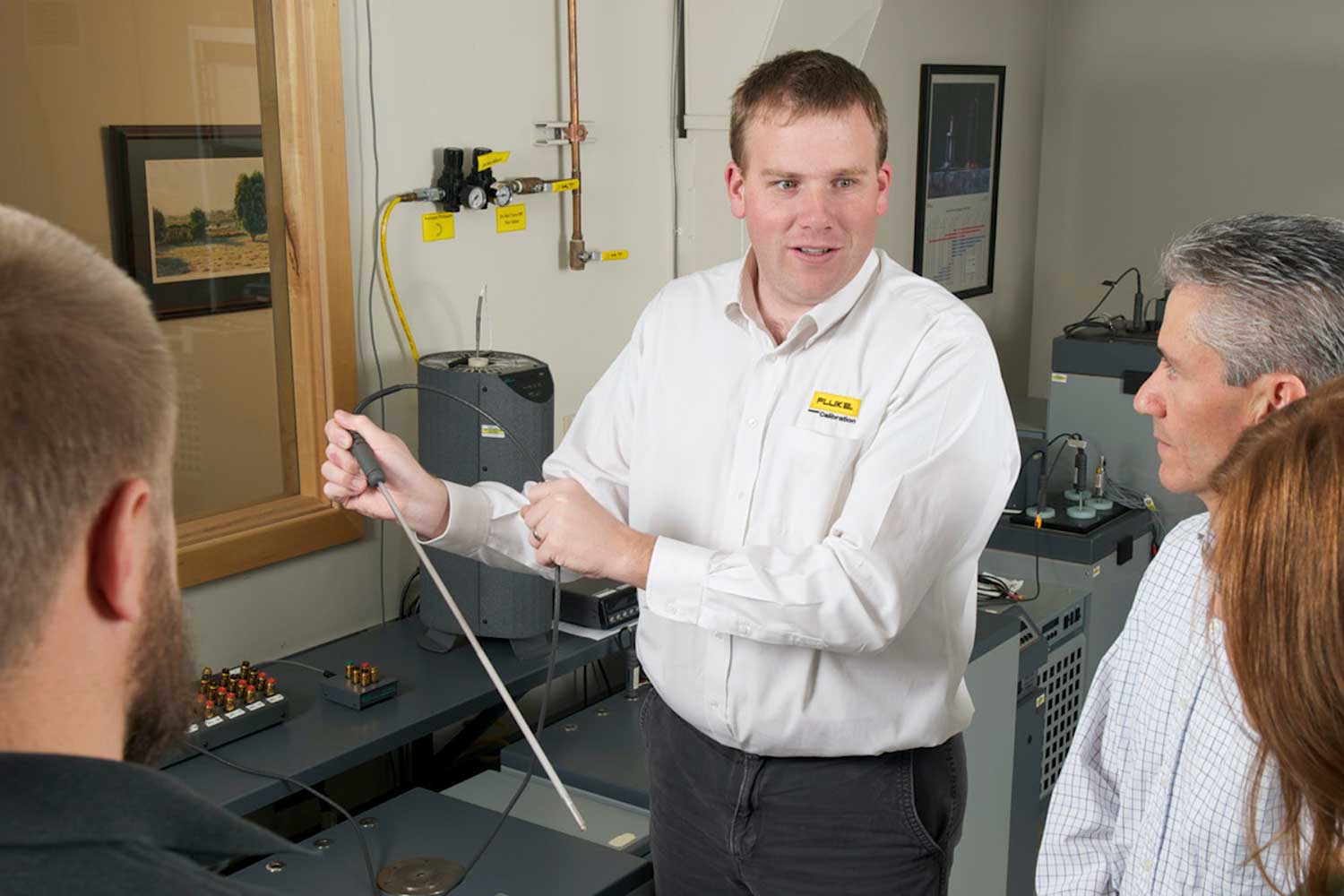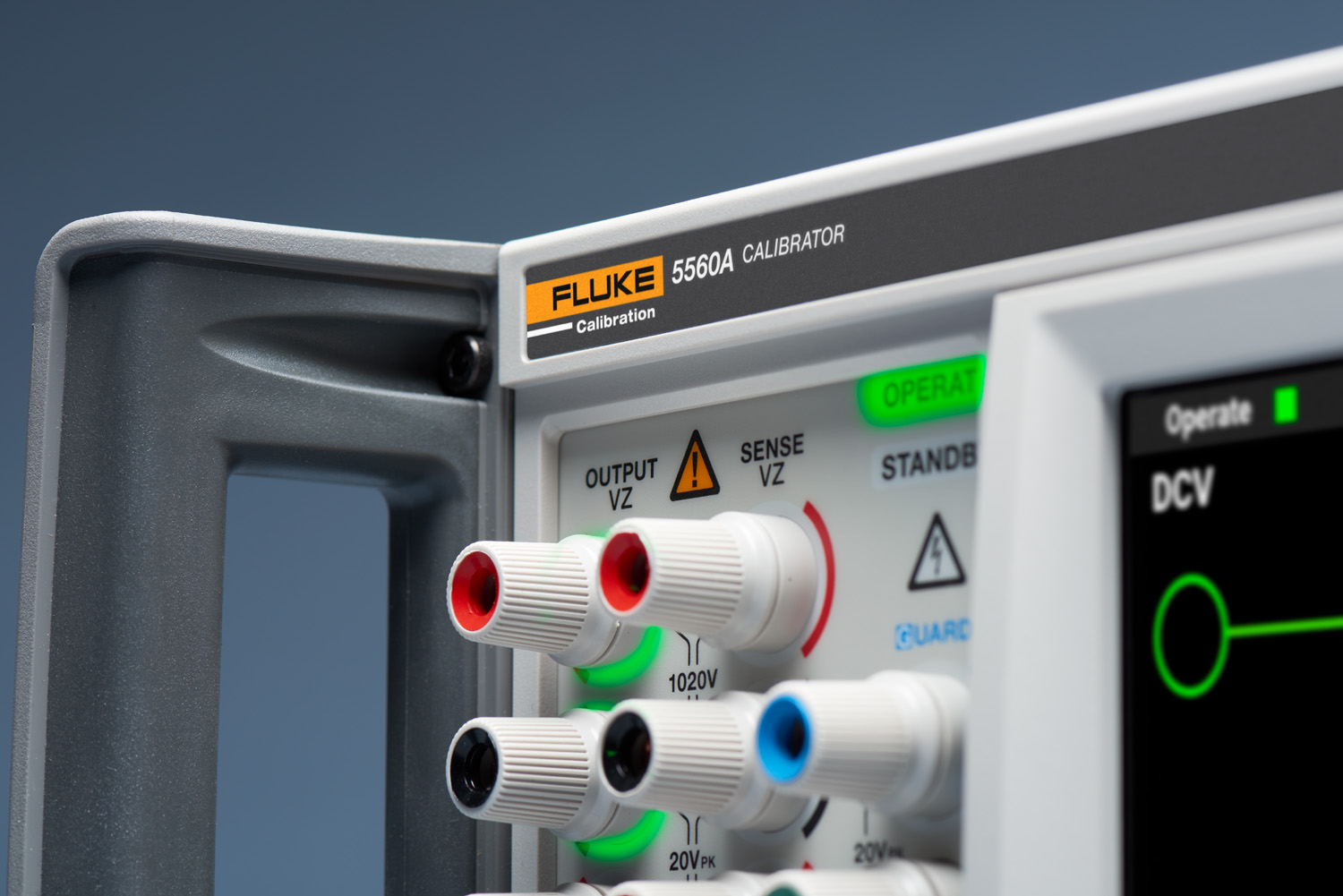- Other Fluke companies:
- Fluke
- Fluke Biomedical
- Fluke Networks
- Fluke Process Instruments
Safety standards and calibration
When we talk about electrical safety, we’re usually talking about the tools, sensors, and assets that fill a facility: the tools and assets that you’re calibrating to keep accurate, precise, and safe. But that focus on safety also extends to the calibrators and tools you use in the lab or field to complete calibration work.
Calibration takes safety seriously. Every one of our tools undergoes rigorous testing to ensure it complies with regulatory safety standards, typically written by The International Electrotechnical Commission (IEC) and modified slightly to meet the needs of different nations. These include The Canadian Standards Association and The Association of German Electrical Engineers (VDE) (TüV).
For test, measurement, and laboratory equipment, we rely on IEC 61010 standards.
No matter what discipline you work in, there can be risks associated with the work. You may be calibrating tools at high voltages or using a temperature bath at extremely high or extremely low temperatures. The chemicals used in calibration could be dangerous or high pressure can cause damage. Doing your work on an instrument you trust to not only be precise but also keeps you in a safe environment is important.

Rigorously tested calibration tools
Every Fluke Calibration tool comes with markings that indicate it follows and passes regulatory standards. In the US these are the certification marks OSHA recognizes from qualified nationally recognized testing laboratories (NRTLs). You may see the NRTL marks on calibration equipment from:
- Underwriters Laboratories (UL)
- Conformite Europeenne (CE)
- The Restriction of Hazardous Substances (ROHS)
- others
That’s the sign that they’ve been assessed and meet the safety, health, and environmental standards agreed upon by the IEC.
Some examples of what this looks like on Fluke Calibration tools include:
Visual Connection Management™
Visual Connection Management lights up the terminals to show where to connect leads on the calibrator. It shows you what to plug in where ensuring you don't make a mistake or connect the wrong things. This not only keeps the operator safe, but also helps to prevent damage to the calibrator. On the 5560A, 5550A, and 5540A Multi-Product Calibrators, the terminals light up specific colors depending on the type of test you set up for. Blue for current, green for voltage.

EX Certification
The 1551A Ex / 1552A Ex "Stik" Thermometer Readout is EX certified, meaning it is rated for explosive environments. The special safety consideration attached to the Stik Thermometer helps provide an extra layer of protection when workers must take temperature measurements in an area with potentially explosive gases, like an oil refinery.
Built-in safety devices
Fluke Calibration metrology baths use a specific temperature controller, the 2100 temperature controller, which has built-in safety devices.
| Safety feature | Use |
| Analog temperature control | Temperature control function is done by analog circuitry rather than the microprocessor. This ensures steady temperature control even if the microprocessor freezes up. |
| Soft cutout | If the bath fluid gets too hot, the microprocessor is programmed to switch off heat. If the set-point temperature is exceeded or if the soft cutout temperature is reached, the control sensor will activate this soft cutout. |
| Hard cutout | A separate, independent cutout circuit switches off power if the bath temperature exceeds the cutout set-point. |
| Over-current protection device | Each leg of the AC supply has an over-current protection device rated higher than the maximum normal operating current of the bath. An electrical short circuit would cause the fuse to blow. |
Each of these features is designed to keep calibration technicians safe when working with potentially harmful chemicals and extremely high or low temperatures. Continue reading about the built-in safety features on Fluke Calibration baths.
Keep tools safe with calibration
By using tools that are built carefully to ensure your safety, your work can help keep people down the line safe; those who are in factories, working with the tools you’ve calibrated. Calibration improves safety.
Especially in environments and industries that require hypersensitive control. Precise environmental measurements, and confidence in the measurements made throughout a facility are assured by proper calibration at every step of the process, which helps keep people safe.
Calibration lab worker safety
The Occupational Safety and Health Administration (OSHA) has built out rules and published guidelines to make US labs safer environments for the personnel in them. In addition to the federal guidelines developed , there are OSHA-approved state plans to improve workplace safety and health.
These guidelines extend from laboratory equipment to chemical exposure plans, fire or explosion emergency procedures, and even laboratory waste disposal.
Continue learning
- Home
- Products
- New Products
- Electrical Calibration
- RF Calibration
- Data Acquisition and Test Equipment
- Temperature Calibration
- Humidity Calibration
- Pressure Calibration
- Flow Calibration
- Process Calibration Tools
- Calibration Software
- Service and Support
- All Calibration Instruments
- Handheld Test Tools
- Purchase Info
- News
- Training and Events
- Literature and Education
- Service and Support
- About Us


